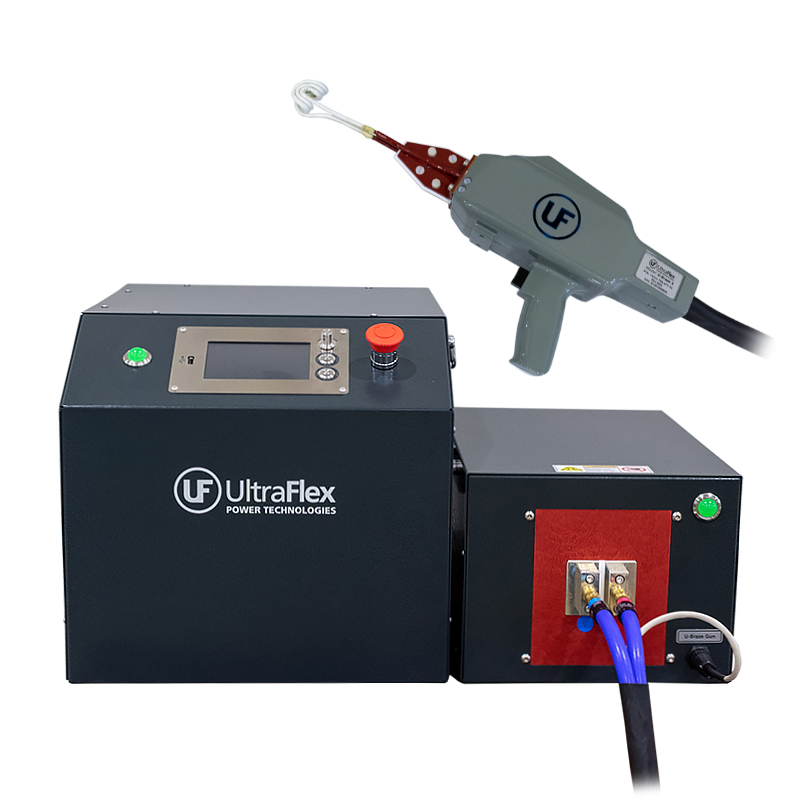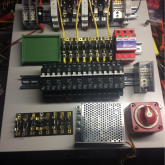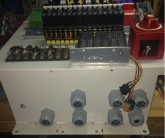When You Can't Find What You Want On The Common Market... Make It.
Electromagnetic Induction Silver Soldering This Morning To Make Brass 3/8" Flange Bolts With 1" Contact Surface Area.
This Is Structural Silver Solder (Mostly Nickel) And Takes An O2 Enriched Torch To Do Normally,
But a dip in flux, a dip in 'Silver Solder Flakes' and into the induction coil, about 15 seconds and it's done.
Sure beats getting out the brazing torch and fiddling around with all that crap...
View attachment 6118
You might notice the Nylon clamp on the ferrite ring, the induction will heat the crap out of anything electrically conductive in close proximity, so Nylon or some kind of non-conductive stand-off between inductor and sheet metal handle/bracket.
View attachment 6119
I have to sneak up on timing, I can melt that bolt into slag with no problems whatsoever, so it takes a little experimentation to get it just right...
Ceramic Ferrite Ring,
Litz Wire,
High Temp Fiberglass Covering,
Induction Driver,
Power Supply,
All from eBay, about 2,500 Watts on this one for about $150.
Smaller ones on 12V power supply can reach about 1,000 Watts for around $60.
Abrasive ceramic saw blade to cut the gap in the ferrite ring, hardware store.
Get the best deals for 2500w induction units at eBay.com. We have a great online selection at the lowest prices with Fast & Free shipping on many items!
www.ebay.com
Silver Solder Paste, or Brass Brazing Paste on the parts, push the button, perfect brazed/soldered joints every time.
When I was working on moving the compressor for my fridge and installing the A/C, ect. I just knew there had to be a better way to braze all those line sets, and this is what I came up with.
The open ferrite means I can concentrate the electromagnetic energy on a closed line, right at the joint I'm soldering/brazing, and still get it off because it's not a closed coil like in the pictures below.
Makes things like this stupid simple.
A different application, same idea.
View attachment 6121View attachment 6122
This one has a hollow tube tube for an Inductor, when the unit is going to be powered for a prolonged period, the inductor has to be cooled, I simply run water or coolant through it.
I've built Drivers/Inductors large enough for my home pressure canners, no more heat & steam in the house during canning season, no more propane, the sun provides the energy.
I love the science of home pressure canning, and I'm dragging some 21st century science into an 19th century process.
Interestingly enough, the 19th century machines still do the best job, I haven't found a way to build a better can seamer (sealer) that were made in the late 19th, very early 20th century...









